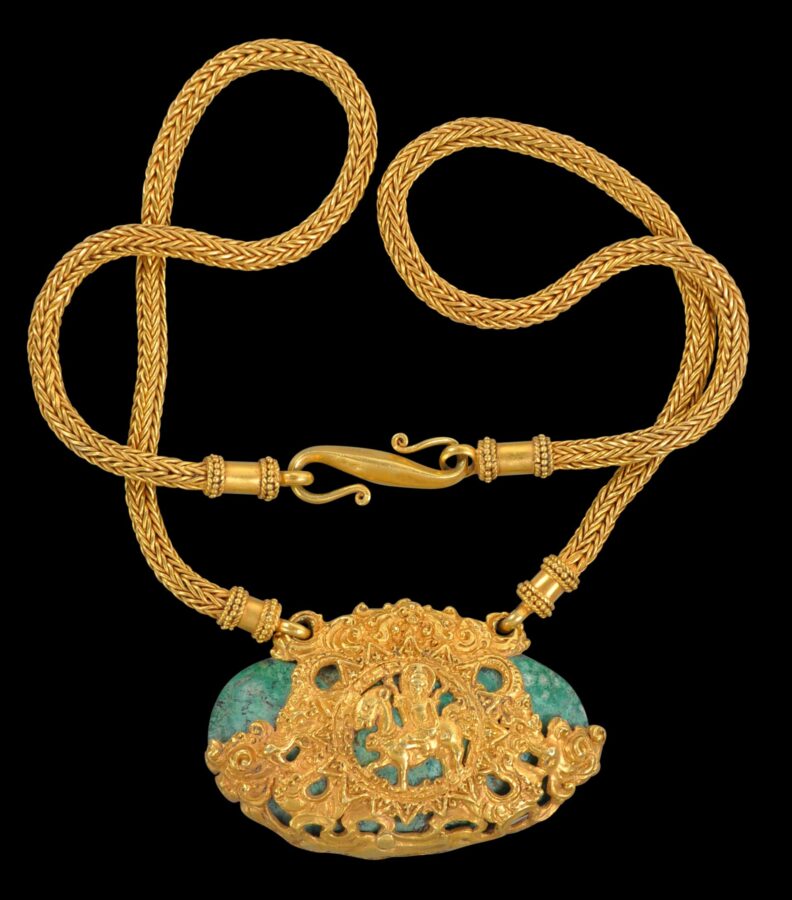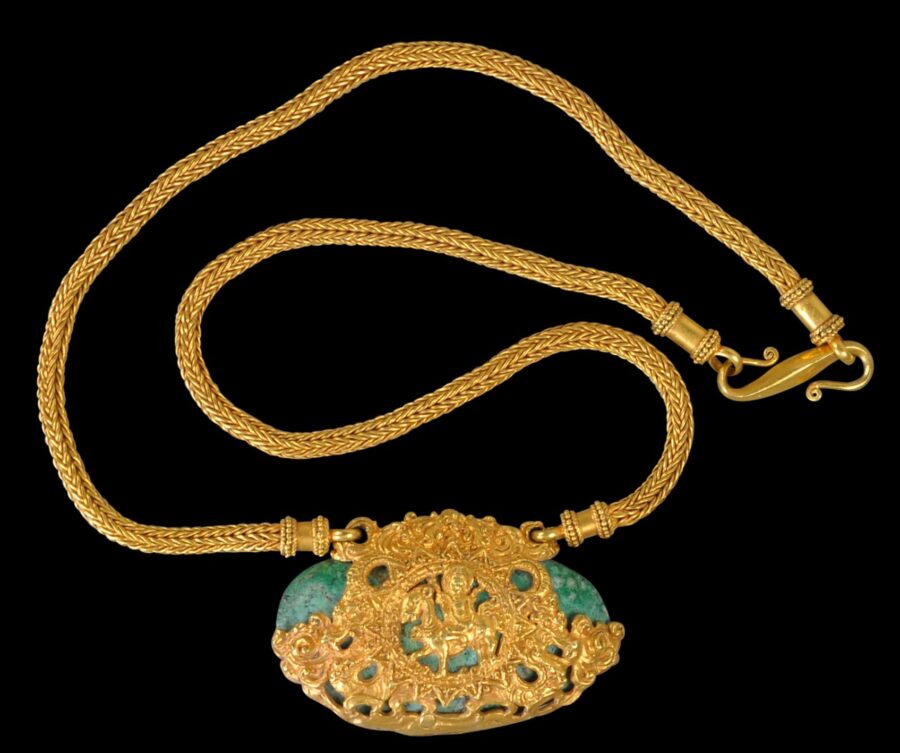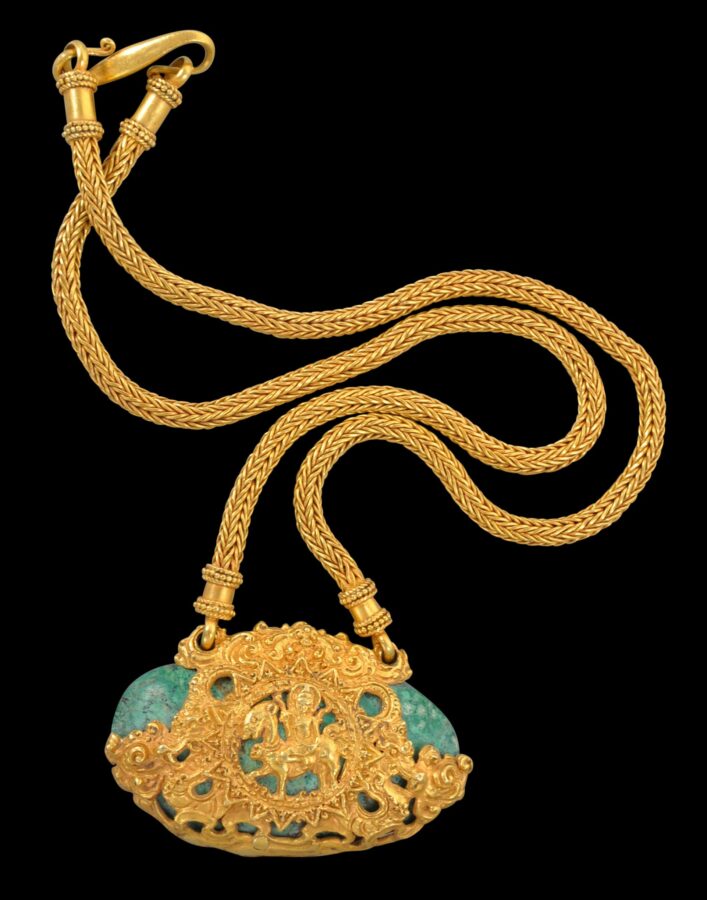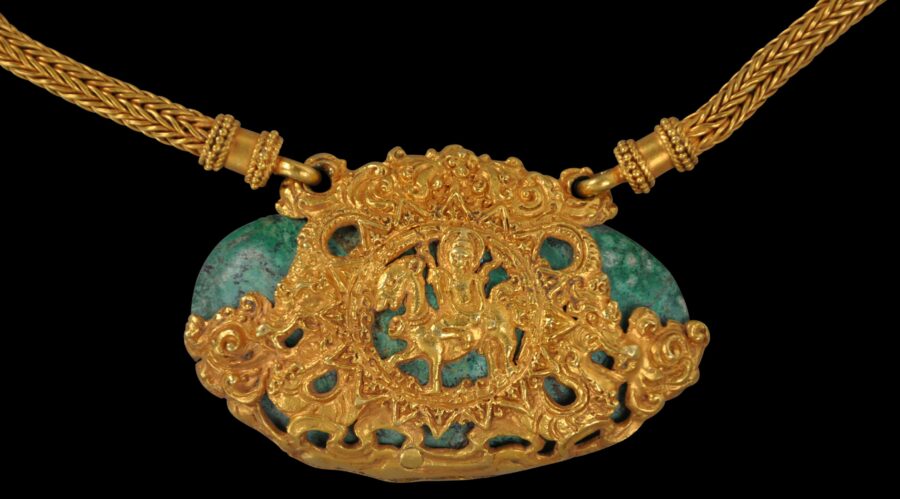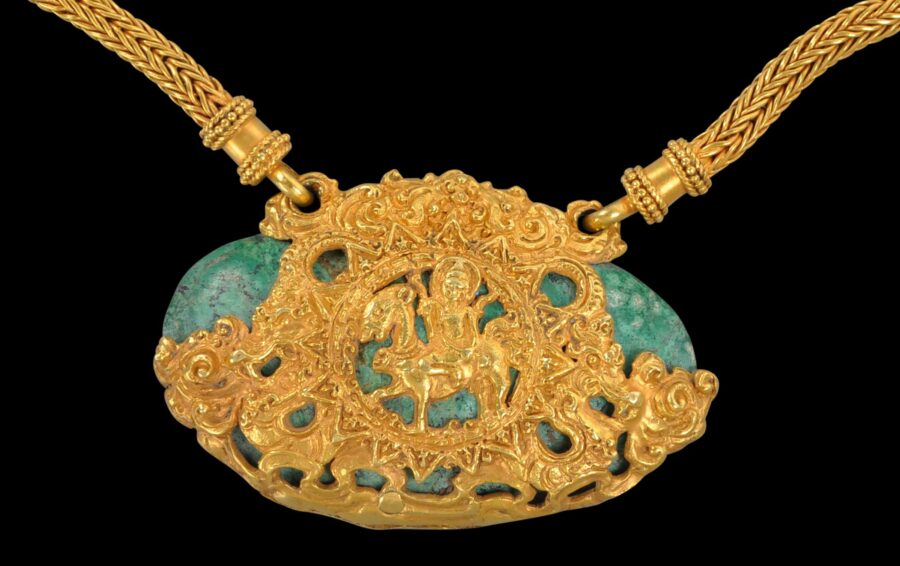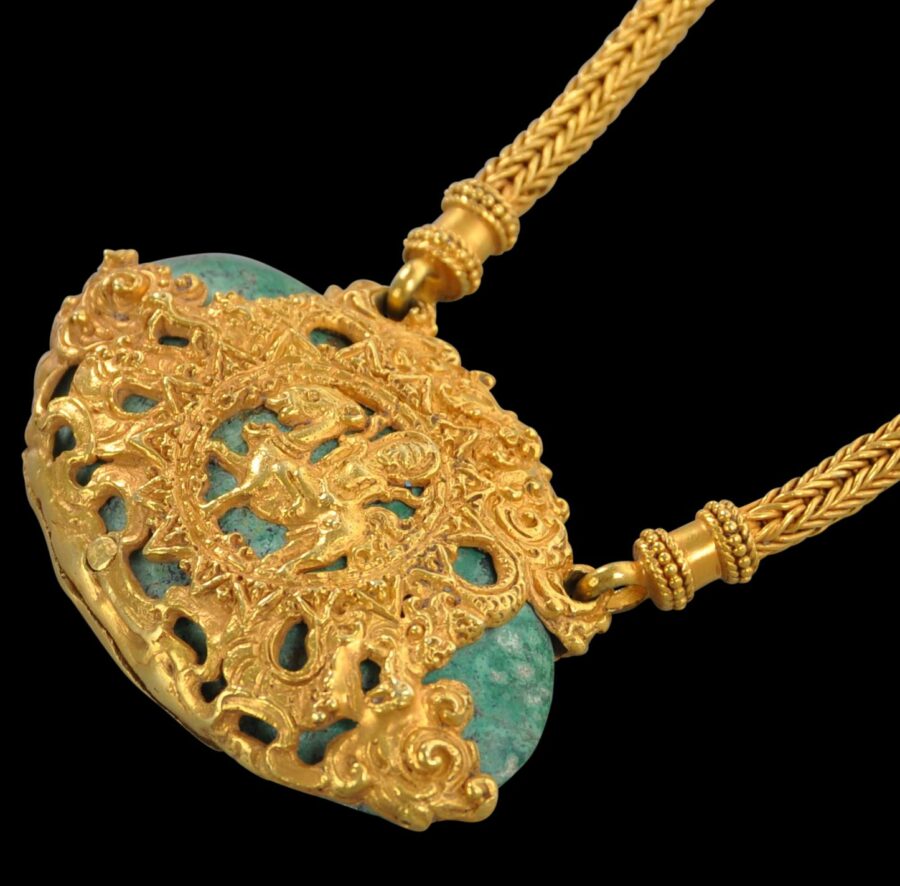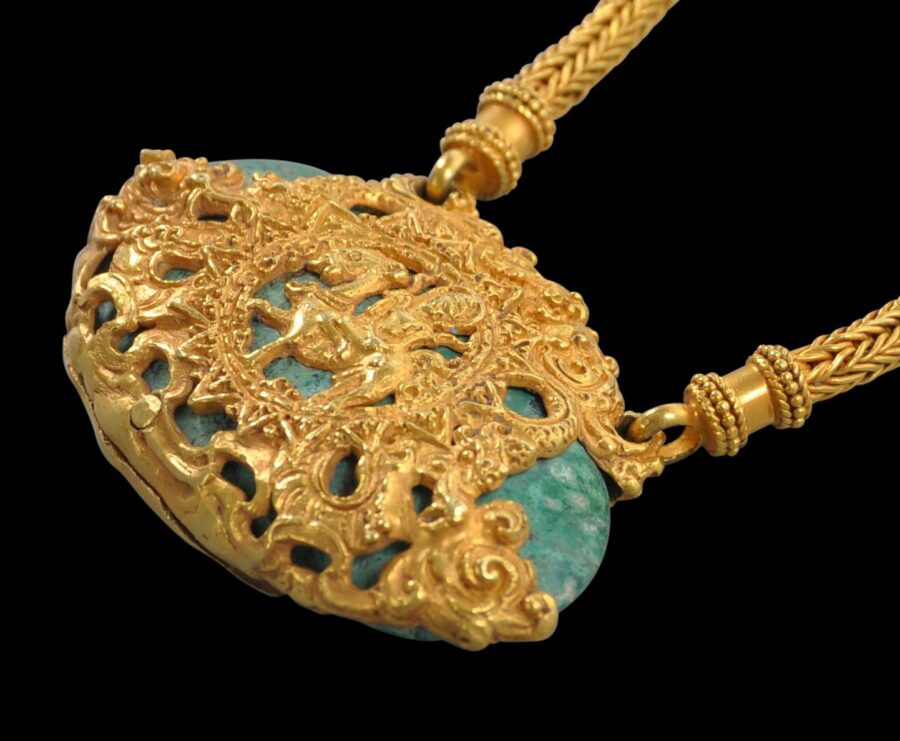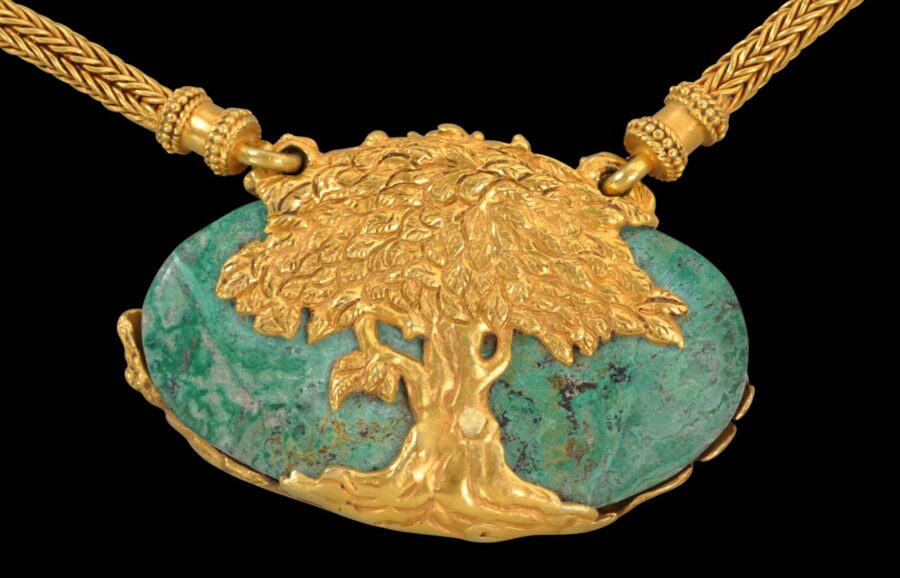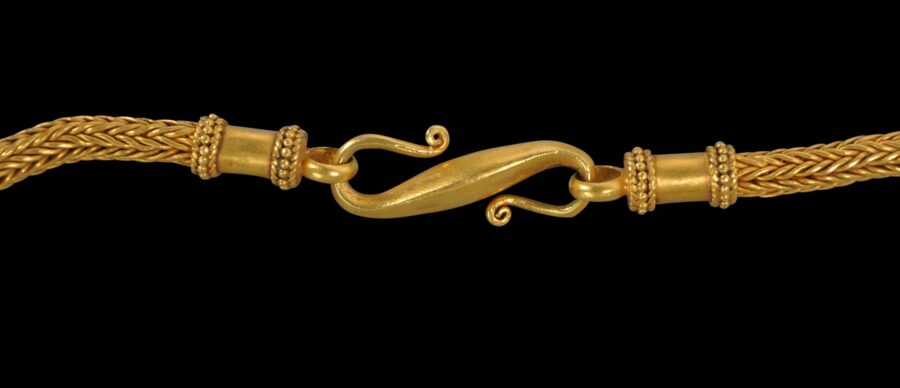Enquiry about object: 9483
Outstanding Early Javanese Gold ‘Surya’ Pendant & Chain
East Java, Indonesia Majapahit Period, 14th century
circumference: 59cm, width of pendant: 6.2cm, width of chain: 4.5cm, weight: 137g
Provenance
private collection, UK; and previously a private German collection
This extremely rare, gold pendant and chain is from East Java in what is now Indonesia and dates to around the 14th century. The pendant comprises finely-cut, pierced gold sheet which encases, on both sides, a polished smooth green pebble, together with a heavy chain of braided gold wire.
The front of the pendant shows a figure on horseback – probably Surya, the Hindu sun god – framed by a cakra-style sun disc, with sixteen triangular ‘rays’ representing the cardinal points of a compass. The solar motif is supported on each side by a serpent or naga each of which wears a crown in East Java style. Billowing clouds emanate from each naga and also over the top of the solar disc.
The addition of nagas instead of makaras makes for a peculiarly Southeast Asian confection. According to Fontein (1990, p. 296) the association of nagas with gods and royalty became increasingly common during the Majapahit period. It survived the arrival of Islam and the naga ever since has been associated with royalty on Java and elsewhere across the Indonesian archipelago.
Fontein (1990, p. 298) shows an ornament in the National Museum of Indonesia, with a similar figure astride a horse within a round solar motif and mentions that the ornament most likely represents the sun.
The reverse of the pendant shows a tree motif – perhaps representative of light and its life-giving properties.
The chain is thick and heavy with rows of fine granulation work on each terminal. The closure comprises a heavy hook mechanism.
See Geoffrey-Schneiter & Crick (2016, p. 165) for a gold woven-wire chain and a pendant that similarly comprises a pebble (this time a large lapis lazuli cabochon) encased in gold, attributed to 14th century Java.
The pendant and chain here are in very fine condition. Tiny red soil particles are visible with the aid of magnification in the crevices of the gold, as might be expected. There are no repairs or loss. It is a magnificent piece.
References
Fontein, J., et al, The Sculpture of Indonesia, National Gallery of Art, Washington, 1990.
Geoffrey-Schneiter, B., & M. Crick, Bijoux D’Orients Lointains: Au Fil de L’Or au Fil de L’Eau, Foundation Baur, Musee des Artes D’Extreme-Orient/5 Continents, 2016.
Kal, W.H. (ed.), Precious Metals in Early South East Asia: Proceedings of the Second Seminar on Gold Studies, Royal Tropical Institute, 1999.
Meulenbeld, B.C., et al, Budaya Indonesia: Arts and Crafts in Indonesia, Tropenmuseum, 1988.
Polak, J., Ancient Indonesian Gold of the Central and Eastern Javanese Periods 750-1550: A Selection, C. Zwartenkot Art Books, 2022.


